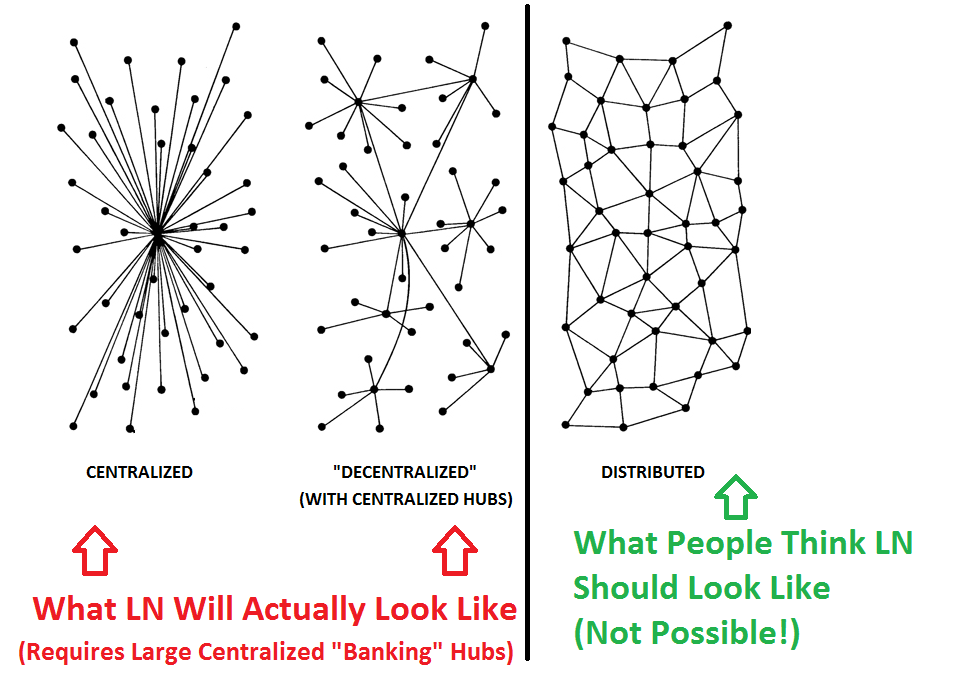Lightning Network is an idea about organizing bitcoin micro-payments such that accounts may be cleared without calling the ledger blockchain all the time.
Jonald Fyookball makes the argument that lightening network attempts to place S&L technology at each node in the right hand model. Micron channels, as defined, open and close as needed. But opening a node means leaving a cash advance to use for congestion management. The 2 by 2 accounting they use has to adjust at each node for a payment transiting the arbitrary net.
The most likely outcome is one of the two network topologies on the left. The middle, for example, is what a lightening network looks like in the users settles on four or five S&L to handle the same amount of sidechains. In other words. micro channels minimize to minimize the number of transactions to clear, and that generally means four or five major micro-exchanges and no other micro channels.
Jonald is correct, that is my handwave also. I described a scatter gather system for bitcoin in which four or five major banks simply offer an Automated S&L sub channel. The side channels will trade at par so the various banks can set up a special purpose clearing network to distribute random payments to the proper side chains.
The original idea of Lightning Net was that payments are kept in sequential order and the payment channels expand or contract to handle congestion, but it had no congestion pricing, no interest charges. It would evolve into the middle structure, and each of the small number of large side chains would would collect micro-payments from the other side chains, and aggregate them up before calling the blockchain. Keep them securely in sequential order solves the trust problem.
Secure element cures all those problems, all transaction should be considered point to point, secure cash transfer for some contractual good, including more cash. Then in the case of Lightning Net, all sidechain coins are valid everywhere, that same, except that some major banks have different congestion conditions back to the block chain. The major bitcoin banks collectively introduce a tradebook uncertainty, separate from the TU inside each of the separate pits. Then on top of that, add he price uncertainty bounds each pit may set differently. All of them, par value micro bitcoin but operating under five different S&L tokenized contracts.
Interest charges and cycle fees
We almost get a three color because trading bots will watch he congestion back into the blockchain, the blockchain fees. Banks may, and will, go under but their potential loss is less than the bound price variation under contract. Or within the tradebook uncertainty total of that ratio. You and your bot both know what the allowable risk is. In fact, if we see bitcoin as the international no arbitrage money, then we will need four or five global banks to cover the global price variations. All of the major investment banks will have bitcoin funds.
And ETH
It is doing the same, except it focuses on investment in smart layer, and associated tech. It's exchanges were originally geared for that, and it has stuck. That is another very lucrative place o be with new money tech. But, investing in start up is a bit wide of amber, so to speak. The investment process itself has plenty of contractual concerns that a simple S to L does not have.
Both, well positioned. Still room for central banking and a gold standard and Walmart points and buyers clubs and mini stock sales and used car parts. Just beginning and the entire 60 trillion derivative industry is coming with..

No comments:
Post a Comment